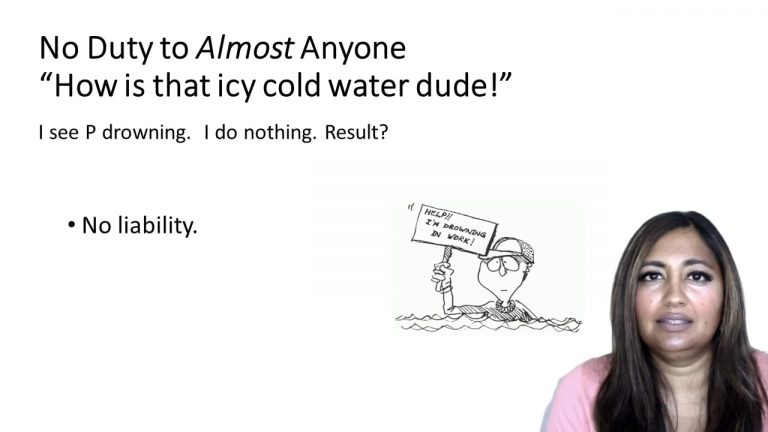SmartBrief
Confirm favorite deletion?
Torts Keyed to Christie
Portee v. Jaffee
Citation:
84 N.J. 88, 417 A.2d 521 (1980)Facts
Renee Porter’s (Plaintiff) seven-year-old son became trapped in their apartment’s elevator door. The Plaintiff watched as members of the police department attempted to rescue him for four and a half hours. Her son died from his injuries. Subsequently, the Plaintiff suffered severe depression and became self-destructive. The Plaintiff sued the owners of the apartment building and two elevator companies that had designed, built, installed, and maintained the elevator (Defendants), arguing in part that they caused her mental and emotional distress by negligently failing to provide a safe elevator. The Defendants moved for summary judgment on this issue of mental and emotional distress.
Only StudyBuddy Pro offers the complete Case Brief Anatomy*
Access the most important case brief elements for optimal case understanding.
*Case Brief Anatomy includes: Brief Prologue, Complete Case Brief, Brief Epilogue
- The Brief Prologue provides necessary case brief introductory information and includes:
Topic:
Identifies the topic of law and where this case fits within your course outline.Parties:
Identifies the cast of characters involved in the case.Procedural Posture & History:
Shares the case history with how lower courts have ruled on the matter.Case Key Terms, Acts, Doctrines, etc.:
A case specific Legal Term Dictionary.Case Doctrines, Acts, Statutes, Amendments and Treatises:
Identifies and Defines Legal Authority used in this case.
- The Case Brief is the complete case summarized and authored in the traditional Law School I.R.A.C. format. The Pro case brief includes:
Brief Facts:
A Synopsis of the Facts of the case.Rule of Law:
Identifies the Legal Principle the Court used in deciding the case.Facts:
What are the factual circumstances that gave rise to the civil or criminal case? What is the relationship of the Parties that are involved in the case.Issue(s):
Lists the Questions of Law that are raised by the Facts of the case.Holding:
Shares the Court's answer to the legal questions raised in the issue.Concurring / Dissenting Opinions:
Includes valuable concurring or dissenting opinions and their key points.Reasoning and Analysis:
Identifies the chain of argument(s) which led the judges to rule as they did.
- The Brief Prologue closes the case brief with important forward-looking discussion and includes:
Policy:
Identifies the Policy if any that has been established by the case.Court Direction:
Shares where the Court went from here for this case.
Topic Resources
Topic Outline
Topic Refresher Course
Topic Charts & Notes

 17m 8s
17m 8s